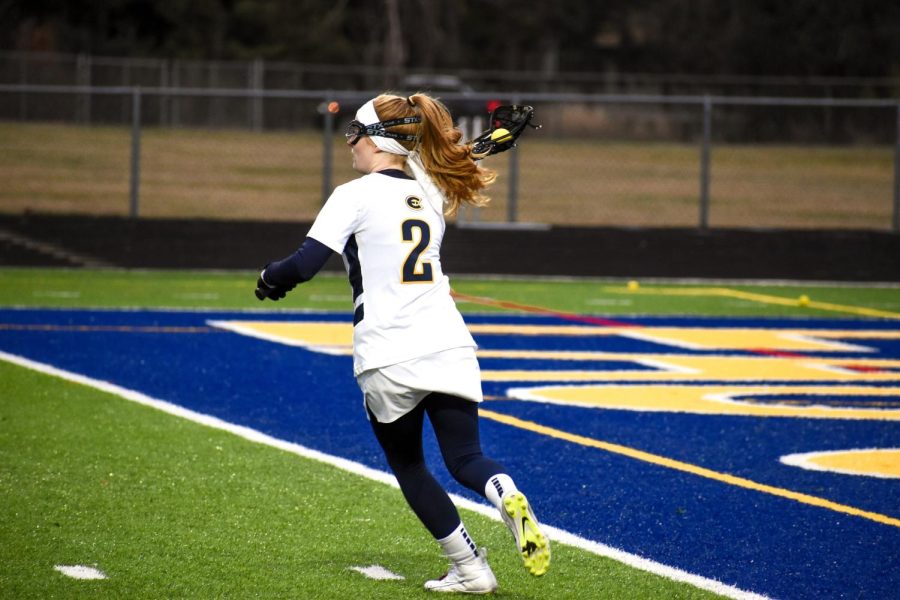OFF CAMPUS: Biology students to camp out in Cambodia to survey animal diversity.
In less than one month, senior Kathryn Prince will be setting up camp in the jungles of Cambodia. Luxuries on the three-week trip will include pit toilets, hammocks for beds and open-sided tents for shelter against the elements.
No, this isn’t a new show on the Discovery channel. It’s a chance to aid Cambodia by surveying the native wildlife of the Oddar Meancheay province.
Prince, along with seniors Chris Maierhofer, Andrew Ludvik, Emilie Carlson and junior Matt Moris, will be assisting Frontier, a non-governmental organization, in cataloging species in a recently established national park.
Deb Freund, associate lecturer of biology, will be accompanying the students on this excursion. Freund sees the trip not only as a great experience for the students, but also as a necessary service to the country.
“Cambodia itself is a poor country,” she said. “They just don’t have people with the correct training, and they certainly don’t have the funds to do the normal things we might do in terms of conservation and in terms of surveying.”
The lack of qualified Cambodian researchers is partly due to a nation-wide killing of educated individuals under the reign of Pol Pot in the `70s, she explained.
“(Pol Pot) instituted just really bizarre policies … he thought a lot of Cambodia’s problems were because there was a wealthy, educated class … to solve that little problem, he had all the doctors killed, all the lawyers killed, accountants, professors, school teachers, anybody who had an education or a professional job.”
Up until the year 2000, Cambodia was still a very dangerous environment, Freund said. There were many factors to discourage outside researchers from entering the country, including unexploded land mines, civil wars and a severe language barrier.
“We don’t mind harsh conditions, but we don’t like being shot at or blown up,” she said.
Now that conditions have improved, researchers like Prince are venturing overseas to help the country make up for lost time.
For biology majors Prince, Maierhofer and Ludvik, the upcoming trip will actually be their second visit to Cambodia. Last summer, they were part of a five-student team that surveyed species diversity in rice paddies.
The researchers were concerned about the rapid introduction of pesticides in the rice paddies. Freund said that 80 percent of the typical rural farmer’s protein comes from insects and animals found living in the rice paddies, so the addition of chemicals could disrupt the species diversity.
Maierhofer, who had always been interested in visiting a third world country, said, “Cambodia was definitely the furthest thing away from this life that I’ve ever been to.”
Despite the previous experience researching in Cambodia, both Maierhofer and Prince expect this upcoming trip to be a completely different experience.
Rather than staying in hotels and making day trips to rice paddies, the team will be sleeping in hammocks and doing their best to avoid scorpions, mosquitoes and tigers, Maierhofer and Prince said.
“It’s kind of like a combination of camping and Man vs. Wild,” Prince said. “Just throw in some tigers and land mines.”
English education major Carlson was not among last summer’s group, so this winter will mark her first visit to Cambodia.
Carlson was initially worried about her parents’ concerned reaction to the trip, but after telling them more about the work she would be doing, her parents’ attitudes shifted to support, and even jealously.
Carlson is especially excited for the wide variety of species she will be looking for in the jungle – everything from “butterflies to tigers.”
Maierhofer is most excited for the personal connection his group will make with the Cambodians when educating local villages about conservation and the importance of preserving the forest.
“It’s one thing to talk about the importance of biodiversity and saving pretty places, but to actually be out there doing it, and making the connections with real people, I think will be amazing.”
Ludvik, who is studying anthropology in addition to biology, is also looking forward to working more closely with the local people of Cambodia.
“We are extremely fortunate to be able to do this research in relatively secluded areas that have not had a lot of exposure to Western science,” Ludvik said. “Each year, numerous new species are found in this part of the world, and it has always been a huge dream of mine to discover a new species, so here’s to hoping.”
ON CAMPUS: Psychology students compare attractiveness and body type in pairs of female friends.
Suppose someone told you friends tend to be similar. This might not come as much of a shock.
Now, suppose someone told you they knew exactly which physical qualities friends tend to have in common. Suddenly, the issue becomes much more interesting.
Soon, juniors Carolyn Kolb and Katherine Quigley will be able to tell you all about female friends and how they compare. With the guidance of April Bleske-Rechek, associate professor of psychology, Kolb and Quigley just finished collecting data that will help identify similarities between female friends in attractiveness and body shape.
The project is an extension of research conducted by Bleske-Rechek, Kolb said. Although previous research has shown trends in shared interests and beliefs, the questions regarding physical attractiveness and how this affects friend rivalry were relatively unexplored.
The research trio hypothesized that women would tend to befriend other women of similar attractiveness.
“Women should want friends who are about as attractive as they are so that those friends help attract quality potential mates,” Kolb explained.
“However, they don’t want friends who are too much more attractive than themselves nor do they want women who are much less attractive than themselves.”
To test their hypotheses, Kolb, Quigley and Bleske-Rechek asked female volunteers to bring a same-sex friend to the lab, where they took pictures and measurements of them. Next, they asked the girls to remove their make-up, pull back their hair and change into scrubs.
Not surprisingly, this evoked some negative reactions from the participants.
“They were freaked out a little that we were taking their pictures, and then they were more freaked out when we asked them to remove their makeup,” Quigley said. “The first couple people, we made it sound optional, and they were like, ‘No!'”
This second step was necessary, however, because they were interested in measuring both natural attractiveness and how much effort was put into being attractive.
The friend pairs were also asked to rate their own attractiveness, their friends’ attractiveness and to compare themselves to their friends on a variety of measures.
Students at California State University, Fullerton are in the process of rating the 80 individual participant photos in attractiveness. These judges will rate the face and body attractiveness separately and combined.
When the judges finish rating the participants, they will return the data to Kolb and Quigley, who will then rematch the friend pairs to see if those pairs are actually similar in attractiveness.
While they wait for the participants’ attractiveness to be scored, the researchers have started running tests on the measurements they recorded.
Quigley said that things weren’t looking good as they started to run through their measurement data. According to their hypotheses, they would expect to see friends’ measurements correlate with each other.
“We didn’t find anything in height; we didn’t find anything in weight or rib cage size,” Quigley said. “But then when we looked at hip-to-waist ratio and their actual cup size, there was a correlation, which was really cool.”
While this doesn’t mean that all female friends share the exact same cup size or the same waist-to-height ratio, it does mean that in general, friends are similar in cup size and in waist-to-height ratio, Kolb explained.
Both students said these results were very exciting, as they support the idea that females tend to befriend others with a similar body type.
Kolb and Quigley will be presenting their findings at the Fifth Annual NorthEastern Evolutionary Psychology Society Conference in April in addition to UW-Eau Claire Student Research Day this spring.
After the data analysis for this project wraps up, Kolb and Quigley hope to continue their involvement in campus research.
“It’s such a good experience to work with a faculty member that closely. Not only are you learning a ton, it’s just an overall good experience. I really enjoy doing what we’re doing,” Quigley said.
“I like learning, and I like research. I have a very broad set of interests, so I’m happy as a clam as long as I’m learning,” Kolb said.
Check out the complete results at Student Research Day, May 2 – 4, 2011 in Zorn Arena.





